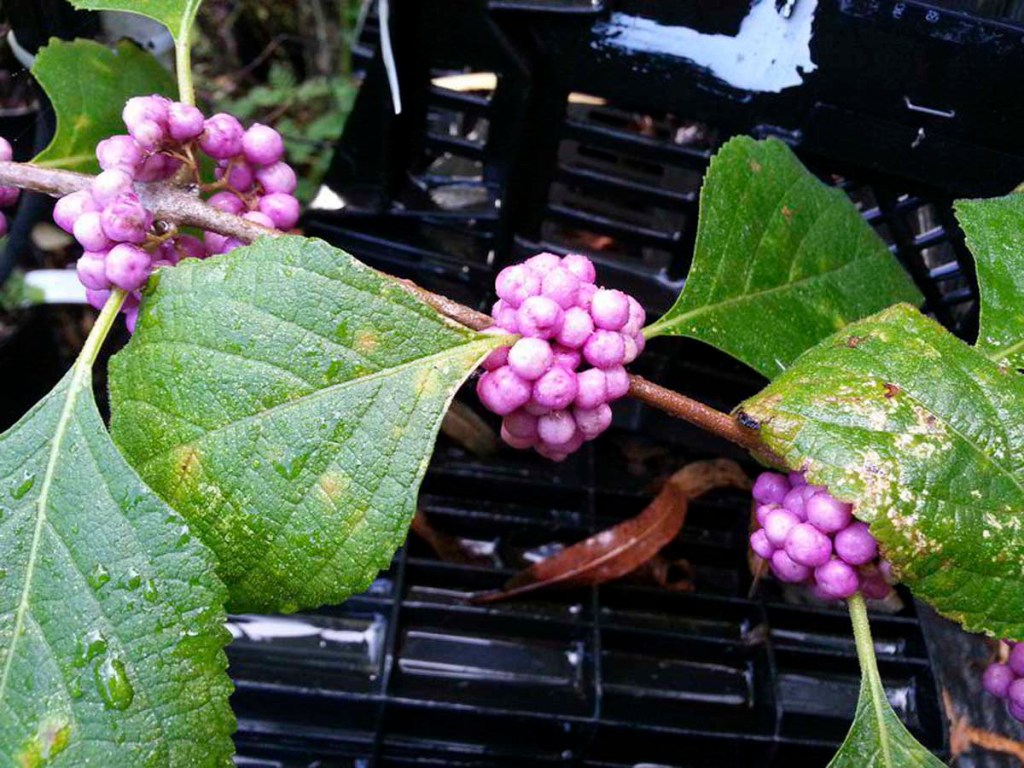SOUTHERN GARDENING: American beautyberry is a 2020 plant winner
Published 11:00 am Saturday, February 8, 2020

- Most American beautyberry shrubs produce magenta-purple berries, but the berries of Welch’s Pink are bright pink that bleach out over the season.
Through February, I’m highlighting plants named 2020 Mississippi Medallion winners. Each of these winners is superbly adapted to our garden and landscape environment.
This week, I want to tell you about American beautyberry, a winner that is a native species found across the Southeast. It is known botanically as Callicarpa americana.
Trending
This widely distributed plant is a fine selection for the home landscape and garden.
It’s hard to miss the gorgeous berries of American beautyberry in the fall, when they are commonly seen along the edges of wooded areas.
Beautyberry is a deciduous shrub that starts each spring completely leafless. New growth starts to push out in May, so don’t worry if you haven’t seen anything earlier in the season. Its flowering is mostly nondescript, with delicate, pink flowers produced in the leaf axils in an opposite arrangement.
But in the late summer, beautyberry is ready to take the landscape stage.
Bright, shiny magenta-purple berries are produced in tight clusters around the oppositely arranged leaves. The arching stems seem to be dripping from the overproduction of berries. In many years, the branches bend over and touch the landscape beds because of the weight of the berries.
A couple of selections have different berry colors. Alba prolificity produces loads of snow-white berries. Welch’s Pink has bright-pink berries that bleach out over the course of the season.
Trending
American beautyberry will easily grow to over 5 feet tall with an equal spread. This size, along with its loose and open growing habit, can make the plant look just a bit unruly for most landscapes.
I think it’s a good idea to prune these plants back to about 6 inches every spring before new growth appears. This pruning keeps the plant manageable and tidy and allows for lots of new growth. Beautyberry flowers and fruits on the new season’s growth, so pruning each year will result in a great fruiting display in the fall.
This shrub grows in most soil conditions in the landscape and tolerates droughty conditions, but maintain consistent soil moisture for best growth. While beautyberry grows in full sun, I like to plant these shrubs in a landscape location that provides afternoon shade to lessen the western exposure heat load.
When out shopping this spring for beautyberry, realize that there are a couple of species that come from Asia. These are C. japonica and C. dichotoma. Both are great choices for landscapes. The only differences lie in the arrangement of the berries along the stems in the fall.
The berries of these species are displayed on short stalks on the opposite leaf axils. If you see these other species available, I suggest giving them a try.
• Dr. Gary Bachman is an Extension and research professor of horticulture at the Mississippi State University Coastal Research and Extension Center in Biloxi. He is also the host of the popular Southern Gardening television and radio programs. Contact him at southerngardening@msstate.edu





